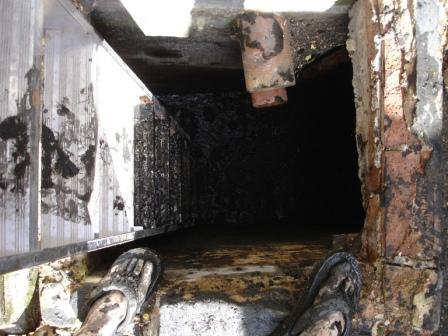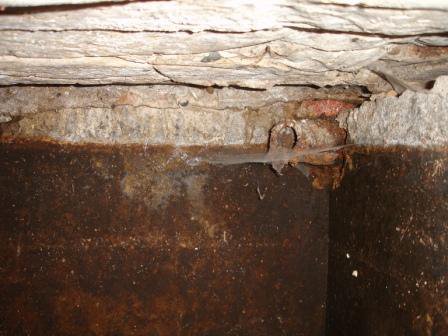Zebra
Member
- Messages
- 3,061
- Location
- St Albans, Hertfordshire
I have a corner of the house which is very wet, and I would like any opinions on what is the cause. I removed the cement render inside and out in the Spring, it dried out a bit. Now it seems to be getting wetter and wetter, worse than any other part of the house, and especially at the bottom.
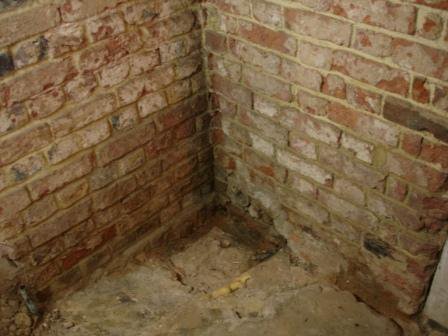
I've ruled out penetrating rainfall, as I've covered it from the outside and it's still getting wet. The floor is cement, but it is elsewhere, and I don't have this damp problem elsewhere.
There is a big hole in the ground, just adjacent to this corner of the house. I don't know how long it has been there, it is about 1.5m deep and 1m sq in area. It is cement lined. The gutters all used to drain into it.
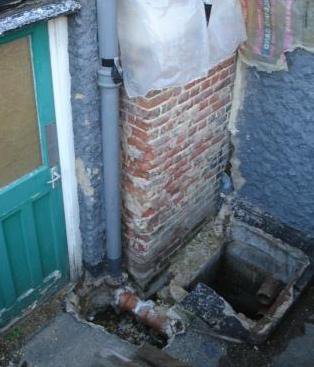
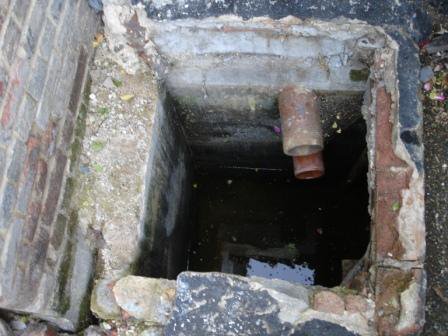
The two pipes in it - one is the runoff from my French drain, and the other is now redundant. It never used to overflow, so it must just leak into the ground when it reaches a certain level. I have not let the water reach a level higher than the inlet from the French drain all summer, as that would flood the French drain. In due course I will dig a soakaway either to connect directly onto this pipe, or to empty the hole before it floods the French drain. For now I run out with a bucket when it rains.
The rising damp is going as far as the top of the brick wall, and affecting the timber frame which sits on top. It perhaps always did, as this corner of the frame was rotten when I uncovered it, and I have had to repair it. I attributed that at the time to the cracked cement render, but perhaps it was coming up from the ground.
But does the wall have some sort of vacuum system? A network of drinking straws? How is so much dampness coming up when the water level is so much lower? There does not seem to be a high water table here. I've dug down in other places and the ground is dry to at least as deep as the foundations of the house, which go 4 courses below what you can see in the picture above.
What do you think I should do? Fill in the hole? There are advantages in filling it in, because it will get in the way of the foundations of the new building which has to go in place of the side extension (the wall in the right side of the frame in the picture above). But then again, it's part of the house's history, I don't know who put it there and why. Perhaps to harvest rainwater. Very grateful for use of your grey matter on this one...

I've ruled out penetrating rainfall, as I've covered it from the outside and it's still getting wet. The floor is cement, but it is elsewhere, and I don't have this damp problem elsewhere.
There is a big hole in the ground, just adjacent to this corner of the house. I don't know how long it has been there, it is about 1.5m deep and 1m sq in area. It is cement lined. The gutters all used to drain into it.


The two pipes in it - one is the runoff from my French drain, and the other is now redundant. It never used to overflow, so it must just leak into the ground when it reaches a certain level. I have not let the water reach a level higher than the inlet from the French drain all summer, as that would flood the French drain. In due course I will dig a soakaway either to connect directly onto this pipe, or to empty the hole before it floods the French drain. For now I run out with a bucket when it rains.
The rising damp is going as far as the top of the brick wall, and affecting the timber frame which sits on top. It perhaps always did, as this corner of the frame was rotten when I uncovered it, and I have had to repair it. I attributed that at the time to the cracked cement render, but perhaps it was coming up from the ground.
But does the wall have some sort of vacuum system? A network of drinking straws? How is so much dampness coming up when the water level is so much lower? There does not seem to be a high water table here. I've dug down in other places and the ground is dry to at least as deep as the foundations of the house, which go 4 courses below what you can see in the picture above.
What do you think I should do? Fill in the hole? There are advantages in filling it in, because it will get in the way of the foundations of the new building which has to go in place of the side extension (the wall in the right side of the frame in the picture above). But then again, it's part of the house's history, I don't know who put it there and why. Perhaps to harvest rainwater. Very grateful for use of your grey matter on this one...

